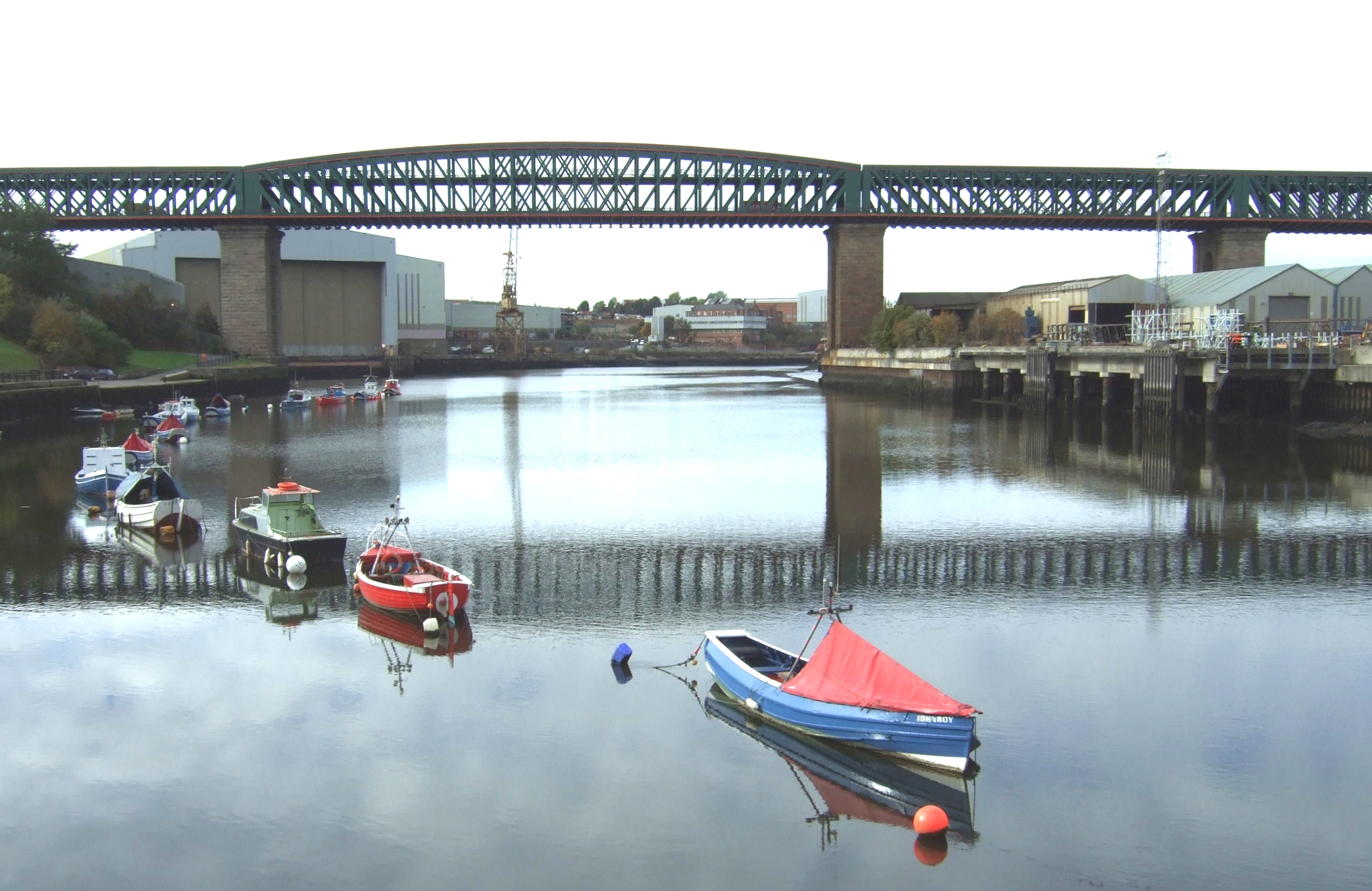- Queen Alexandra Bridge
:"This article is about the bridge crossing the
River Wear ; for the bridge crossing theOttawa River , seeAlexandra Bridge ."Infobox Bridge
bridge_name = Queen Alexandra Bridge
caption = The Queen Alexandra Bridge in October 2007.
official_name =
locale =Sunderland ,England
carries = Motor vehicles
"(A1231 road )"
Pedestrians
crosses =River Wear
maint =
open = 1909
below = 85ft
traffic =
design =Truss bridge
toll =
mainspan = 300ft
length =
width = The Queen Alexandra Bridge is a road traffic, pedestrian and (former) rail bridge spanning theRiver Wear inNorth East England , linking the Deptford and Southwick areas ofSunderland . Thesteel truss bridge was designed by Charles A. Harrison (a nephew ofRobert Stephenson 's assistant). It was built by SirWilliam Arrol between 1907 and 1909 and officially opened by The Earl of Durham, on behalf of Queen Alexandra onJune 10 1909 .In 1899 the
North Eastern Railway Company and theSunderland Corporation agreed to build the bridge to improve communications across the river and to connect the coalfields of Annfield Plain and Washington with Sunderland's south docks. Before the completion of the bridge, road traffic crossing the river had to use one of two ferries which crossed below near to where the bridge is today. As the bridge was due to be built near to the successfulshipyard s of the Wear, a clause in theNorth Eastern Railway Act 1900 required that only one arch span be built over the river to give a clearance of 85 feet above high water level.The approaches to the bridge were completed in 1907 by the Mitchell Brothers of
Glasgow and the bridge proper comprises three 200 foot land spans (weighing 1,000 tons of steel each) and a 300 foot river span (weighing 2,600 tons of steel) and was the heaviest bridge in theUnited Kingdom at the time. The bridge was built from each side of the river and the two halves came together at noon on15 October 1908 . In all, a total of 8,500 tons of steel, 4,500 tons ofgranite , 60,000 tons ofred sandstone fromDumfries , and 350,000 bricks were usedcite web|title=SINE Project: Structure details for Queen Alexandra Bridge|work=University of Newcastle upon Tyne |url=http://sine.ncl.ac.uk/view_structure_information.asp?struct_id=1242 |accessdate=2006-10-12] and the cost of completion was £450,000. The bridge also housedgas andwater mains and in later years, highvoltage electricity cables and a pumped rising-main forsewage . About six million tons of coal passed over the upper-deck annually for export but the trade rapidly declined at the end of the 1910s. For the last few years only one train per day passed over the bridge. The last goods train ran over in 1921, but the lower-deck continues as a valuable road link. In theSecond World War , the upper-deck was used as asearchlight andanti-aircraft platform. The railway and decking at each end of the bridge were finally removed near to the end of the 20th century. A large free standing brick and stone viaduct fragment remains on the north side of the Bridge.From
21 March 2005 , the bridge had been restricted to southbound traffic whilst repainting and repair work was carried out on the 96 year-old structure, which was due to take almost a year to complete. It reopened for both lanes of traffic on12 October 2006 , having been partly closed for 18 months and costing £6.3m in repairs. [cite news |title= Historic bridge repair work ends |work=BBC News |url=http://news.bbc.co.uk/1/hi/england/wear/6042024.stm |date=2006-10-11 |accessdate=2006-10-12]References
ources
* [http://www.ngfl.gov.uk/localhistory/discovery.php?id=408 National Grid for Learning]
* [http://sine.ncl.ac.uk/view_structure_information.asp?struct_id=1242 University of Newcastle Upon Tyne]Crossings navbox
structure = Crossings
place =River Wear
bridge = Queen Alexandra Bridge
upstream =Hylton Viaduct
downstream =Wearmouth Rail Bridge
Wikimedia Foundation. 2010.
